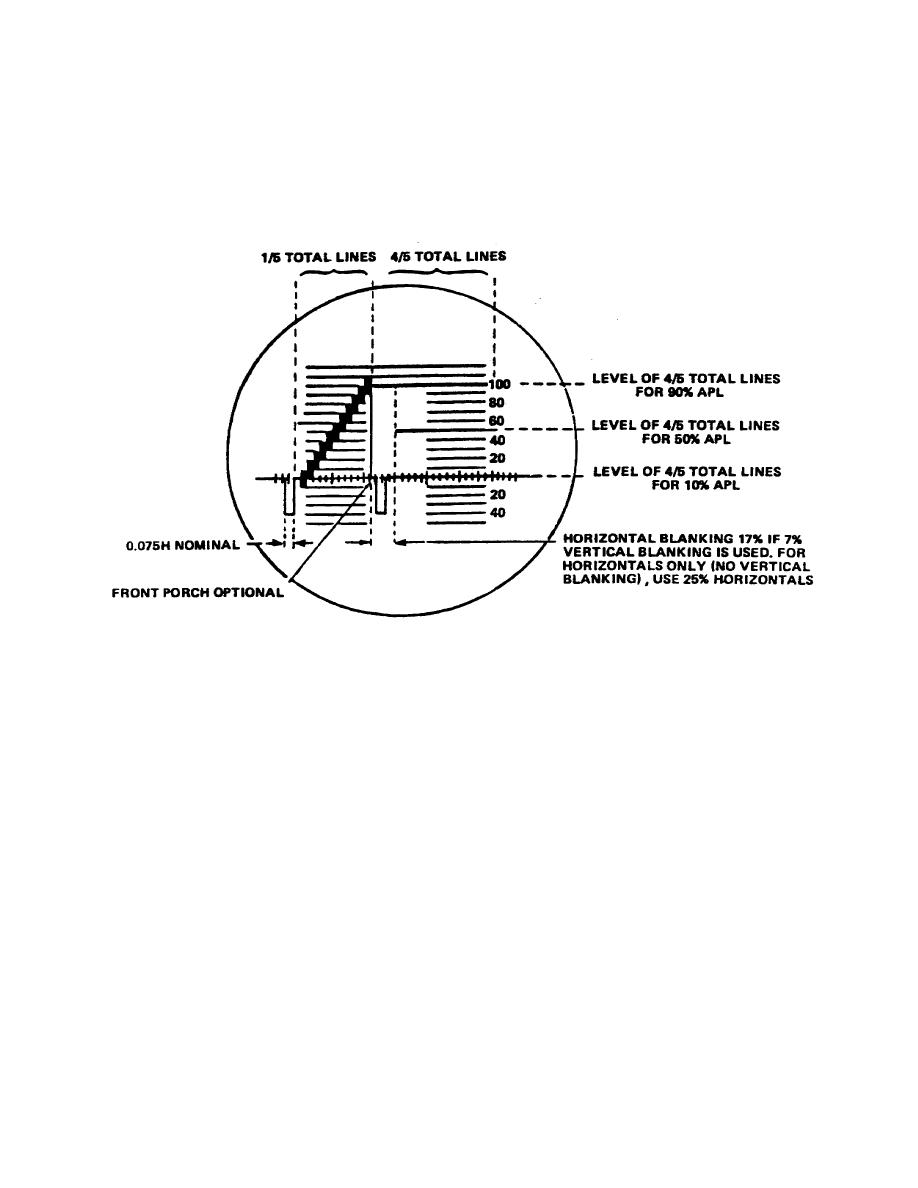
b. Figure 3-5 presents the specifications for the stairstep generator test
signal when provided with variable APL.
The linearity test signal generator
sometimes includes provisions for inserting horizontal sync only.
In this case,
the blanking width should be set for 25 percent of a line period (15.8
microseconds).
If fed through equipment where composite station blanking is
inserted, the normal station blanking pulse should cover the test generator
blanking output (maximum of 11.4 microseconds horizontal with 7 percent vertical
blanking).
Figure 3-5.
Specification for the stairstep signal
Learning Event 2:
DESCRIBE THE VERTICAL INTERVAL TEST SIGNAL (VITS) AND THE
VERTICAL INTERVAL REFERENCE SIGNAL (VIRS)
1. Vertical Interval Test Signal (VITS). In the standard television signal there
is, immediately following each vertical-synchronizing interval, a series of 20 or
21 horizontal lines which carry no video information.
In a receiver or monitor,
these lines provide an interval which ensures that the vertical retrace is complete
before any video information is received and are intended to perform no other
function.
a. The lines normally appear on a monitor as a gray band across the top of the
picture; usually this band is adjusted so that it is behind the mask. While these
are actually horizontal lines, they are conveniently considered as a part of the
vertical-synchronizing interval.
51



 Previous Page
Previous Page
